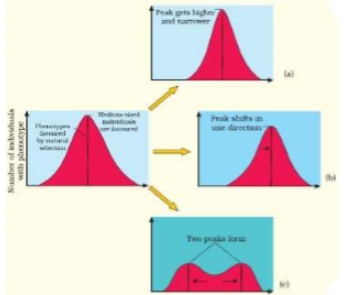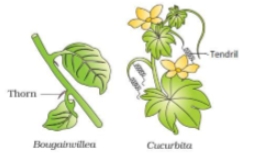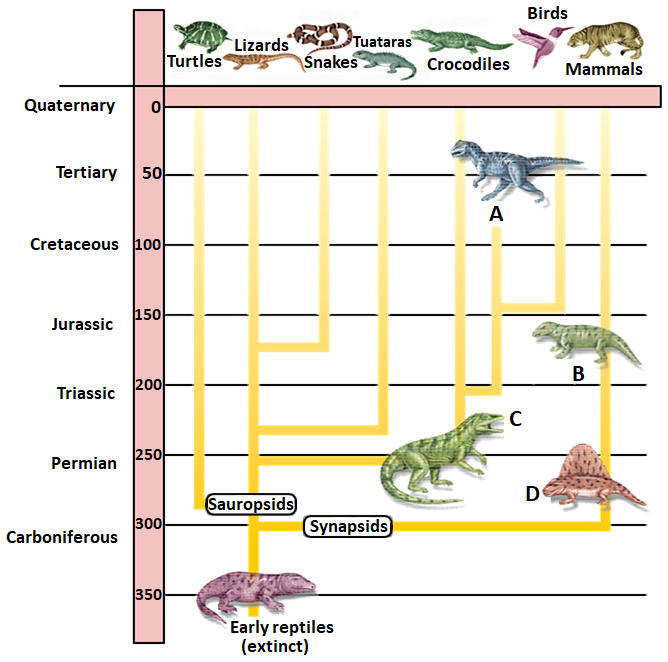Darwin believed that certain parts of the body get larger and more complex through the generations because they :
1. are used more extensively than other parts
2. contribute to greater reproductive success
3. are pre-determined to do so
4. are most similar to God's perfection
The wings of a bird and that of an insect are:
1. Analogous structures
2. Homologous structure
3. Vestigial structures
4. Useless structures
Directional selection favours:
| 1. | Both extremes of a trait |
| 2. | Intermediate form of a trait |
| 3. | Environmental differences |
| 4. | One extreme form over the other extreme form and over intermediate forms of the trait |
Most often the factor that initiates the speciation of two populations is:
| 1. | Geographic isolation |
| 2. | Inability of the gametes to fuse |
| 3. | Different courtship behaviours |
| 4. | Different copulatory organs |
The oldest fossils resemble:
1. Amoeba
2. Red algae
3. Heterotrophic bacteria
4. Autotrophic bacteria
Reptilian ancestors of the mammals were the :-
1. Therapsids
2. Thecodonts
3. Pterosaurs
4. Plesiosaurs
Given below is the representative evolutionary history of vertebrates through geological periods. A, B, C, and D respectively are:
| A | B | C | D | |
| 1. | Dinosaurs | Thecodonts | Therapsids | Pelycosaurs |
| 2. | Dinosaurs | Therapsids | Thecodonts | Pelycosaurs |
| 3. | Pelycosaurs | Therapsids | Thecodonts | Dinosaurs |
| 4. | Therapsids | Dinosaurs | Pelycosaurs | Thecodonts |
Karn & Penrose showed that birth weight follows a normal distribution, that mortality for newborns is greater for those either under-or over-weight, and that the mean birth weight (7 lbs) coincides with that showing minimum mortality. The type of natural selection operating here is shown by the graph :

1. (a)
2. (b)
3. (c)
4. Both (a) and (b)
The following two plants exhibit :

1. Analogous organs
2. Vestigial organs
3. Rudimentary organs
4. Homologous organs
In the apparatus of Urey and Miller experiment, the gases [G] contained in the flask are :
1. Methane, Carbon dioxide, Ammonia and Water vapour
2. Methane, Hydrogen cyanide, Ammonia and Water vapour
3. Methane, Ammonia, Hydrogen and Water vapour
4. Carbon dioxide, Oxygen, hydrogen and ammonia








